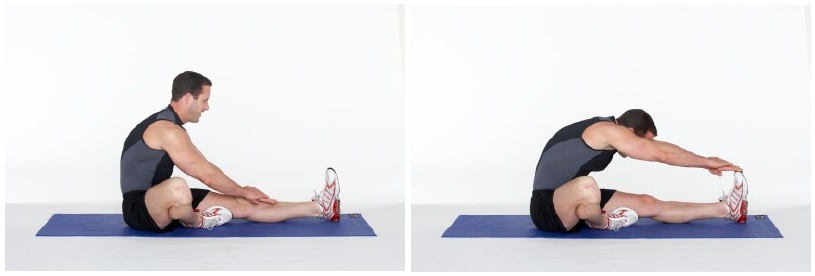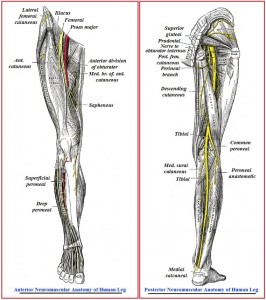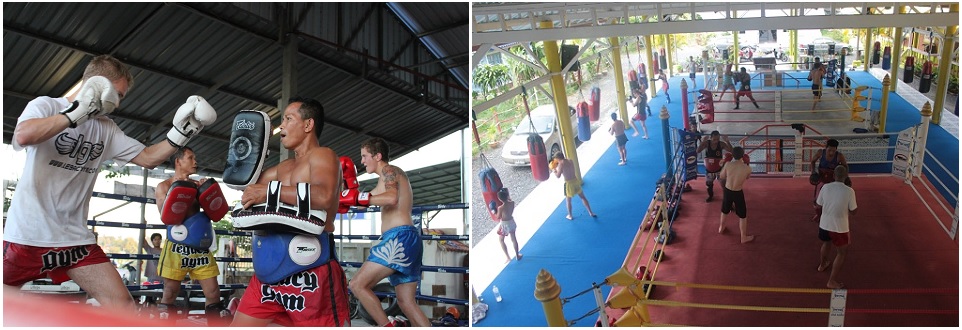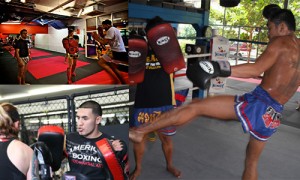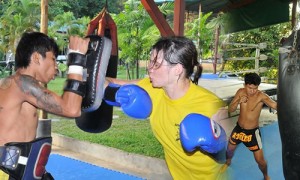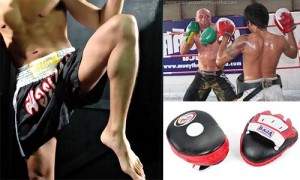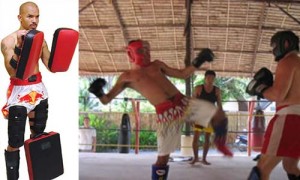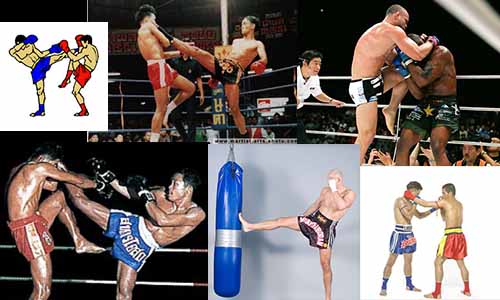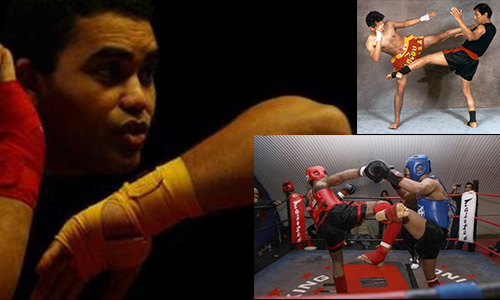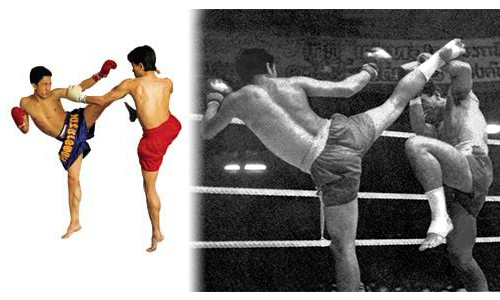Category Archives: Training Methods and Techniques
Cultivating Discipline and Self Control through Muay Thai
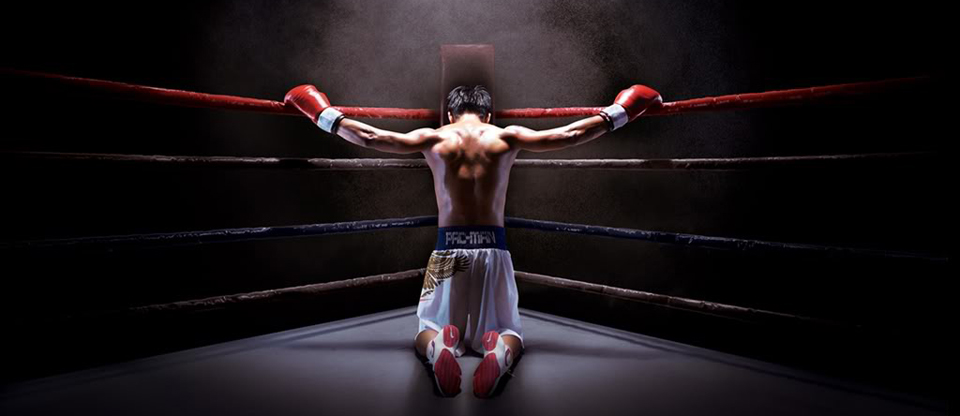 Muay Thai is known as the combat martial art that originated from ancient Thai era. This martial art form uses stand up striking along with different clinching techniques using no weapon but just the use of fists, elbows, knees, shins and feet. Those who train for Muay Thai learn minor and major techniques which use the entire body movement, rotating the hip with each punch, elbow, block and kick.
Muay Thai is known as the combat martial art that originated from ancient Thai era. This martial art form uses stand up striking along with different clinching techniques using no weapon but just the use of fists, elbows, knees, shins and feet. Those who train for Muay Thai learn minor and major techniques which use the entire body movement, rotating the hip with each punch, elbow, block and kick.
The popularity of Muay Thai crossing the borders of Thailand, has made a lot of people become aware of the many benefits this martial art offers aside from gaining the fighting skills for professional competitions. For aspiring Muay Thai fighters, the objective is to learn the proper techniques in order to win in professional Muay Thai competitions. Their rigorous training includes routines focused on body conditioning such as running, rope jumping, body weight resistance exercises, shadow boxing, abdominal exercises, medicine ball exercises and weight training. This training regimen should promote a level of fitness and toughness required for ring competitions. Strengthening and conditioning of the different body parts used in Muay Thai fighting are the focus of training.
However, Muay Thai is not confined to people who want to be professional Muay Thai fighters. It is learned by ordinary people who want to use Muay Thai training and techniques for self-defense. A lot of women have turned to learning Muay Thai to better equip themselves with the skills they can use, not in Muay Thai ring or arena but on the streets where criminal elements target women for their prey. With the skills they learned from their Muay Thai training, these women have gained confidence about how they can defend themselves against aggressors or potential attackers.
Other people learn Muay Thai purely for fitness purposes. The body conditioning routines help keep the body fit, strong and properly toned. The exercises required help keep the body in good physical condition, which overall, enhances the person’s well-being.
In Muay Thai, one also gets to learn moral values and self-discipline. Along with the exercise routines, Muay Thai also teaches humility, self-confidence and modesty. Muay Thai is ritualistic in nature and it incorporates important values and lessons into the art of Muay Thai. The ritual dance of homage (wai kru) which the fighter performs before the competition is a ritual showing a student paying respect to his teacher who helped him/her become a Muay Thai fighter. The ritual is an act of paying respect, not just to the trainer, but also to the parents, and family.
In essence, this ancient martial art form is about culture, honor, respect, discipline and self-control.
Muay Thai training teaches the person to practice:
-
Discipline. Following the training regimen regardless of the difficulty is important in order to perfect and master the techniques.
-
Respect and self-confidence through a structured approach. The training program is designed such that the person learns to respect other people. And by learning and mastering the skills, he gains self-confidence, which is very important in Muay Thai fighting.
-
Self-defense skills. All the techniques learned in Muay Thai training may be used in situations that warrant defending oneself from attackers. Even if the skills are not for professional fighting level, they will be enough to cause harm to perpetrators.
-
Teaches student to move quickly and fluidly and to act and think fast. Flexibility and quick thinking are also taught in Muay Thai. As different fighters have different techniques, one has to be able to make quick decisions to avoid getting hit.
-
The importance of ensuring that you employ the appropriate degree of self-control and discipline at all times. Over-all, Muay Thai training instills a sense of self-control and discipline. Learning the skills to fight does not become a ticket to start a brawl or challenge people for no reason. A Muay Thai trainee recognizes situations where mere provocation is not enough reason to engage in a fight.
With all these benefits, it is not surprising that a lot of people from all over the world are now incorporating Muay Thai training into their systems and daily routines. Muay Thai training allows a person to develop physical strength, coordination and stamina, and at the same time enhance one’s determination, patience and self-control.
Best Exercises for Athletes
 Athletes keep a regular exercise regimen so that they remain fit and conditioned physically for their sport. A triathlon athlete for example will keep a daily routine of running, cycling and swimming so that his body remains attuned to the rudiments of the sport. So, does a Muay Thai fighter who performs his basic training everyday. Repeatedly performing such exercises will get your body and mind accustomed to the exercise activities. As you progress you get more room to improve your performance in terms of speed and endurance.
Athletes keep a regular exercise regimen so that they remain fit and conditioned physically for their sport. A triathlon athlete for example will keep a daily routine of running, cycling and swimming so that his body remains attuned to the rudiments of the sport. So, does a Muay Thai fighter who performs his basic training everyday. Repeatedly performing such exercises will get your body and mind accustomed to the exercise activities. As you progress you get more room to improve your performance in terms of speed and endurance.
Depending on the sport an athlete is engaged in, an athlete may add any of the following exercises to their routine of best exercises for optimal results:
Power Cleans
Cleans are a total body exercise that use quads, hamstrings, calves, glutes, spinal erectors, deltoids, forearms and traps. Core muscles to stabilize your spine throughout the movement are also included in this exercise routine. Cleans develop power and explosive strength essential to an athlete. This exercise even if not combined with other exercises will help you achieve an athletic build on its own.
Core Training
A strong core is what every athlete needs. Core training will help you get that six-pack athletic build. To get your core tight and strong, hanging leg raises, planks (front and side) and crunches will do the works.
Bench Press
Bench press is the king of the upper body just as the squats are the king of the lower body. Athletes requiring strength on the upper body can use this exercise as a mainstay in their training routines. The bench works the shoulders, triceps, chest and even the abs are used to help generate power and stability. Regardless if it’s barbell or dumbbells, bench press is a must in your training program.
Plyometrics
These exercise routines are very popular with athletes who want to build quickness, agility and explosiveness. The routines involve many different jumps and other movements and the most common plyometrics type is what you usually see in a conventional gym – box jumps. If these routines are not done properly, they can lead to injury especially for those who are not in good shape or physical condition.
Shoulder Press
Sports with pushing movements require athletes to have strong shoulders. Shoulder press works the deltoids along with the lats, traps, and triceps. This exercise is also a must to achieve an athletic build.
Rows
These exercises help build strength needed for pulling movements required in sports like wrestling, football and others. Rows primarily work the lats and traps. The biceps and shoulders are strengthened as well. These exercise routines will add thickness to your back muscles.
Lunges
These are used by athletes who want to build strength in the hips, glutes and the quads. Lunges will also shape your butt nicely.
Sprints
Most athletes have this exercise in their training program. Sprints help build power, explosiveness and speed. Having incredible speed can be a huge asset for any athlete. Regardless if it’s a fast break in basketball, or going deep on a passing route, or stealing a second base in baseball, having speed will be to your advantage. Doing sprints in interval training is also a good fat burner, thereby giving every one engaged in this exercise an athletic shape and build.
By sticking to your training program and religiously doing any of these exercises, you will definitely have that edge over your competition, irrespective of the sport you are into.
Clinch Techniques in Muay Thai
Like other forms of martial arts, Muay Thai involves different fighting techniques. Muay Thai is a fighting art of contrition where blows are exchanged by opposing parties. Almost all techniques used in Muay Thai involved the entire body movement, where the hip rotates with every kick, punch, elbow and block.
One of such techniques which Muay Thai fighters try to master is clinching. This technique is also used in Judo, amateur wrestling, mixed martial arts (MMA) and Sambo.
In Muay Thai, clinching is described as grappling of the hands around the neck of the opponent during an offensive or defensive combat. This particular technique is used as an effective method to subdue the opponent or control the aggressiveness of the other fighter.
The clinch technique is different from other martial art forms such as Judo as it permits utilizing the knee techniques, punching, kicking and delivering elbows. Being able to use these various attacking methods provide the boxer with the advantage of striking using the Muay Thai clinch.
How Muay Thai Clinch is Done
As opposed to western boxing, Muay Thai fighters are not separated when they clinch. Aside from using the knee and elbow techniques when they clinch, a little bit of stand-up grappling is also used.
The Muay Thai fighter holds the opponent through the head, body, or neck. The fighter then presses his forearm on the collar bone of the opponent. The typical clinching technique in Muay Thai involves the tapping of the head downward before releasing a throw. He can cause the opponent to lose balance by throwing him to his left.
There are three reasons why clinching techniques require the fingers not to be intertwined.
-
With the fighters wearing gloves when fighting in the ring, intertwining the fingers is no longer possible.
-
The front clinch involves pressing the head of the opponent downwards. This becomes easier if the hands are locked behind the back of the head instead of behind the neck. The arms should be putting as much pressure on the neck as possible.
-
A fighter may incur an injury to one or more fingers if they are intertwined and it becomes more difficult to release the grip in order to quickly elbow the opponent’s head.
A correct clinch involves the fighter’s forearms pressing against the opponent’s collar bone while the hands are around the opponent’s head backwards or elbow them as the clinch requires both participants to be very close to one another.
Muay Thai has several other variants of the clinch technique which include:
-
Arm Clinch. This technique requires one or both hands to control the inside of the defender’s arms and where the second hand, if free, is in the front clinch position. The fighter will be able to control the opponent so he can apply a knee strike or throw.
-
Side Clinch. This technique requires one arm passing around the front of the defender with the attacker’s shoulder pressed into the defender’s arm pit and the other arm passing round the back which allows the attacker to apply knee strikes to the defender’s back or to throw the defender readily.
-
Low Clinch. This technique requires both controlling arms to pass under the defender’s arms, which is generally used by the shorter of two opponents.
- Swan Neck. This technique requires one hand around the rear of the neck used to briefly clinch an opponent before applying a strike.
Stretches for Hamstring
Hamstring, in human anatomy is a tendon group contracted by four rear thigh muscles stretching from the hips to the calf. This muscle and tendon groups cross and act upon two joints, namely, the hip and the knee. It is responsible for lifting the pelvis and bending the knee. The hamstrings play an important and critical role in numerous daily activities such as running, walking, jumping, and controlling movement in the trunk. When the knee is bent, the short and long heads of the biceps femoris flex the knee and outwardly rotate the lower leg.
Muay Thai, like other competitive contact fighting sports requires body conditioning designed to promote the fighter’s level of fitness and toughness, Muay Thai fighters usually engage in rigorous training regimens that include running, shadow boxing, rope jumping, body weight resistance exercises and other weight training exercises. And because of these training exercises, it is important that the muscles are conditioned before a fight. While other sports focus more on the front thighs instead of the back, injuries of the hamstring are very common. The kicks used in Muay Thai require the use of this muscle group and in order to avoid injuries of the hamstrings some stretching exercises for the hamstring are recommended. Most of these exercises are to be held for no longer than ten seconds.
Sitting Hamstring Stretches
This stretch exercise targets both the hamstrings and the lower back.
- Forward Bend with Rounded Back
- Sit on the floor and extend both legs stretched out in front of you, legs together.
- Fold your torso over the thighs, gently rounding the back but keeping the legs straight. A forward straight bend should be held bending from the waist, not the back.
- Hold the position for ten seconds and then sit up and relax. The stretch can be repeated up to three times.
- Hurdler Stretch
- This version of Muay Thai stretch for hamstring targets one leg at a time.
- Sit on the floor, straighten your left leg in front of you and the right knee is bent, placing the sole of the right foot against the left inner thigh.
- Fold over the left leg while keeping the back straight.
- Hold for ten seconds, then switch legs.
- This can be repeated 3 times for each leg.
Standing Hamstring Stretches
This is one of the best exercises to strengthen, train and stretch out hamstrings in a standing position. This exercise aims to bend from the waist and abdomen instead of the lower back and try to touch the front knee with the forehead and with both knees kept straight.
- Stand and cross your right foot in front of your left.
- Slowly lower your forehead to your right knee by bending at the waist.
- Keep both knees straight.
- Hold this position for 10 seconds. Relax before repeating the exercise for the left foot in front of your right foot. This can be repeated at least two times for each leg.
Lying Down Hamstring Stretches
This exercise requires warming up of the abs muscles because they will be needed for holding the leg in position.
- Lying down on the floor, place one foot against the wall.
- Start lifting one leg in 90 degree angle while pushing the other towards the floor.
- Hold the position for a maximum of ten breaths.
- For building strength, one can start with three breaths at a time.
Another version of the hamstring stretch on the floor is lifting the leg not just in 90 degree angle but as high as possible – above the head with the knees unbent. The self-stretch version would require holding on to the knee with one hand while the stretch can be completed with the help of a partner who pushes the leg further. Each side stretch should be repeated three times, taking a few seconds rest in between the shift.
How to Make Your Muay Thai Thigh Kicks Lethal
“Tao” means “feet” to the Southerners of Thailand. In Muay Thai, “tao” means kick, one of the techniques used in this Thai combat sport. There are several variations and tricks used in Muay Thai kicks, and depending on the intent, they can be lethal.
Muay Thai Thigh Kick
Thigh kick, in Thai language is “Te Kha”, which means Thigh (Te) and Kick (Kha). It is basically a low roundhouse kick variation. But unlike the oblique roundhouse kick. You bend your standing leg when doing Te Kha. This kick is designed to weaken your opponent’s stance.
Execution
To execute the Muay Thai thigh kick, follow the steps/tips below:
- Start from your Muay Thai fighting stance.
- Step forward and slightly out of the center line.
- Kick with your back leg and twist on the ball of the foot of the front leg (standing leg). The knee of the standing leg is slightly bent.
- Kick with the bottom of the shin and not with the foot. The foot of the kicking leg is extended but relaxed. Turn your hips with the kick.
- At impact, the kicking leg is 80 percent extended.
- Don’t bend the kicking leg too much at the beginning. Muay Thai roundhouse kicks are not snapped.
- Extend one arm, keep the other hand close to your head and don’t lift the elbow. Make sure both sides of your head remain protected.
- Go back the same way and plant the kicking leg at the exact same spot where you started.
- If you notice that your opponent keeps looking at your head, attack him with low kicks.
- The cut kick is an even lower roundhouse kick variation than the thigh kick. Thigh kicks are usually easier to apply.
- Practice the Muay Thai thigh kick on a high heavy bag.
- Exhale as you kick.
- Keep your chin down.
Variations of Kicks
There are different ways in making your Muay Thai kicks powerful, decisive and possibly lethal.
- In order to produce a powerful kick, you need to have momentum support. A jumping kick should be able to support a decisive kick since all the power will be transferred to the stretching and kicking leg. The violent power of such kick will make the opponent unable to retaliate forcefully.
- You can aim for the opponent’s back of the neck by creating a deceiving movement that will lure the opponent to bring down his guard to protect the other parts of his body. When the opponent lowers his hands, it is the golden time to deliver your foot against his back of the neck with all the force you can gather.
- One technique is waiting for the opponent to attack first. You can counter such attack with impeccable timing. By doing this, your opponent could guess the opponent’s approach. An example would be when an opponent throws a punch, making his ribs exposed and open. You could sway your body away a little from the punch and send your powerful kick to his exposed ribs.
- In order to launch a lethal kick, you need to exploit any gaps or openings that will present during a strike. When the opponent swings his body to launch a kick, this is a good chance to exploit any gaps. You can target the solar plexus or the chest area around the heart. The impact of your kick on such target could finish off the opponent. Your Muay Thai thigh kick will have the power depending on the swing of the foot, the good timing, and the transfer of all power to the kicking foot.
Before you train to making your kicks lethal, learn the basics first. Here are the different basic Muay Thai kicks; the foundation of all other complicated and more powerful kick techniques.
Benefits of Muay Thai Training
Muay Thai, a martial art form that originated from Thailand, also known as the “Art of Eight Limbs,” which is focused on strikes using the eight points of contact: feet, knees, elbows and fists. It uses the power of rotation in the hips to deliver dynamic and strong punches, elbows, blocks, and kicks.
Muay Thai is also an effective health and fitness training. It can improve one’s health and give a physically fit and strong body. Muay Thai workouts and training not only get a trainee in the best fighting form, he can also benefit from them health-wise. This may be the reason why a lot of people are interested and attracted in Muay Thai. Even if they are not training for a Muay Thai fight, they are after the health benefits the training will give them. People who go into Muay Thai training can build stronger and more defined arms, legs and stomach. In many ways, the training also helps to gain a sense of inner strength and emotional balance.
Muay Thai training is known for its rigid training program which includes an innovative variation of sparring, jabs, power punches, and defense techniques and all blends of aerobics exercises. Muay Thai training camps in Phuket, Bangkok and other places in Thailand come up with best training package that would not only entice Muay Thai enthusiasts to enroll but would encourage fighters to better their craft in the sport. These intensive workouts will help the Muay Thai trainee learn the proper execution of the different Muay Thai fighting techniques and help keep them physically fit and stronger.
Other than preparing the body for the physical stress and stand the impact of the opponent’s strikes, there are fitness, social and defense benefits that Muay Thai provides.
Fitness Benefits of Muay Thai
- Well-proportioned body. People who are into Muay Thai training are taught to perform warm-up exercises to improve blood circulation. Muay Thai training speeds up the body’s metabolism and burns off fat. Over time, one will notice a significant decrease in fat and a remarkable increase in muscle toning, and an overall improved sense of well-being.
- Strength and Agility. Regular Muay Thai training helps build up stamina and put one’s body in good shape. Arduous routines which are part of the training will help keep the body stronger. And because the training requires constant training and drilling, one will develop his mind and body for a quick response in effectively reacting to the opponent’s strikes.
Social Benefits
Part of Muay Thai training is learning about practicing discipline, respect for rules, and obedience to the instructor. By implementing various methodologies, one will eventually possess good manners, good spirit, honesty, sense of justice and self-confidence.
Defense Benefits
- Helps develop courage, determination, and self-confidence. People who train in Muay Thai perform regular exercises which are very important in keeping the body toned to be driven to the limit of exhaustion. Without physical stamina and the required will and determination, the kind of rigorous training developed for Muay Thai can easily get a person to give up. Therefore, one has to condition his mind to be tough in order to complete the training program. And that will develop a sense of self-confidence which will grow as one becomes more in tune with the workouts. With proper training, one is equipped with the ability to defend one’s self against opponents or adversaries.
- Intelligence and Wisdom. Muay Thai involves innumerable tactics, tricks, and techniques. If one is serious about his Muay Thai training, he will learn all the tactics to counter the attacks of the opponent and at the same time deliver powerful strikes to the opponent. Muay Thai also requires the fighter to develop wisdom in using the techniques, learning when the punches and the kicks should be thrown to the opponent to achieve maximum impact. A fair degree of intelligence is developed together with learning one art of self-defense.
Muay Thai Competitive Training
In all of Thailand, Phuket has become a popular tourist destination for two reasons – the long stretch of beaches and the Muay Thai training camps.
Countless foreign visitors travel to Thailand to take the opportunity to first have a glimpse of how Muay Thai training is conducted. The reason is because there are various Muay Thai gyms all over Thailand that offers supreme training program, making it hard for those interested in learning the art of eight limbs to choose which gym to conduct their training at.
Muay Thai has gained international recognition, in fact, several training camps have been set up in the different parts of the world, nevertheless, the best place to learn the combat sport will still remain on the country where it originated, and that is Thailand, wherein unrivalled Muay Thai trainings and individual programs are being regulated for each of their fighters.
All those who are interested in learning Muay Thai who doesn’t have any basic training or knowledge of the said combat sport will be given a beginner’s program. Through the course of time, these trainee’s will learn that discipline, hard work and dedication is what it takes to become good in the art of eight limbs, its either they will enlist for the Muay Thai competitive training investing their time and life honing the skills to become one of the best competitive Muay Thai fighters or just continue with the basic program as part of their fitness regimen as well as gaining and learning a challenging skill.
With the rigid and intensive training program designed solely for each individual, it wouldn’t be surprising that a trainee could progress from a complete novice to a moderately-skilled Muay Thai fighter in just a couple of weeks.
Muay Thai training camps can easily prepare the fighter or trainee for participation in an organized fight for amateur Muay Thai boxers. These amateur fights will test the effectiveness of the training program undertaken by the training camp in preparing the fighter for his ring battle.
Training and Conditioning for Competitive Muay Thai Fight
All Muay Thai training camps administer a designed training program for each fighter that will prepare them to have the level of fitness and toughness required for ring competition. During this stage, the fighter has undergone intense training program that consists of daily running, shadow boxing, pushups and sit-ups plus clinching and sparring.
In addition to the daily regimen of strenuous workouts and activities, those training for competitive fights will have additional staples of conditioning that includes body weight resistance exercises, abdominal exercise, weight training, rope jumping, bag and pad work, medicine ball exercises and sparring.
It is Important for fighters preparing for a competition that their Muay Thai conditioning regimen will include practice punches, kicks, knee techniques and elbow strikes. The fighter trains with a trainer wearing thick pads that cover the forearms and hands intended for the fighter to learn to react to the attacks of the pad holder in real fighting scenarios. Straight kicks or knees to the body are practiced by having the trainer wear belly pad around the abdominal area.
To practice hand speed, timing, punching, punch combinations, counter-punching techniques, defense and power, focus mitts are used for training. The fighter also endures heavy bag training meant to condition his body and reinforce the techniques practiced on the pads. To test the fighter’s technique, skills, range and strategy, sparring is also included, though not often so as not to risk injury before the fight.
Muay Thai Conditioning
Muay Thai is a combat sport that uses the different body parts as weapons in fighting. This sport requires maximum physical strength and stamina to be able to successfully defend oneself from the opponent. And like other competitive contact fighting sports, Muay Thai focuses heavily on the right body conditioning.
Muay Thai fighters have to undergo special training programs to promote the fitness and toughness level required for the competition. Some of the conditioning activities performed includes running, rope jumping, shadowboxing, body weight resistance exercises, abdominal exercises, medicine ball exercises and as necessary, weight training.
Shin Conditioning
The fact that Muay Thai fighters or boxers rely a lot on kicks using the shin bone, this part of the body should be well conditioned to repeatedly hit hard objects without hurting the boxer. Cortical remodeling is a process where the shin bones are hardened to prepare them from the hard kicks that will be thrown during the fight. Shin conditioning is designed to increase the fighter’s pain threshold and not to kill the shin nerves as commonly misconstrued.
Shin conditioning may be achieved by kicking the heavy bag or the Thai pads. It takes time to get your shins conditioned to hard kicks. For beginners, it is best advised to use a softer Muay Thai pads or a less dense heavy bags then gradually shifting to harder pads and bags as the training progresses. Training with coaches on heavy bag, focus mitts, Thai pads and sparring are all part of a daily training regimen in many rounds, usually of 3-5 minute periods with 1 to 2 minute rest in between.
Muay Thai Pad Training
Muay Thai pad training is a cornerstone of Muay Thai conditioning and this involves practicing kicks, punches, knees, and elbow strikes with a trainer. Fighter should wear thick pads which cover the forearms and hands. These Muay Thai pads are designed to absorb the impact of the fighter’s strikes. In actual Muay Thai fights, the pads will allow the fighter to react to the attacks of the opponent’s pad holder. A belly pad worn around the abdominal area of the trainer will allow the fighter to throw some straight kicks or knees to the body anytime.
Sparring
This is a conditioning activity required by every Muay Thai fighter or boxer. Sparring three times per week with full protective gear on will keep their skills sharp and help condition their body to the attacks and strikes when fighting. Sparring sessions in five rounds of five minutes per round is done three times a week.
Sparring is one way to test skills, range, technique, timing and strategy against an opponent. As a conditioning activity, sparring is often a light to medium contact exercise in order to prevent the risk of sustaining injury if sparring very hard. Sparring can enhance specific tactics and strategies such as clinching, in close fighting, cutting off the ring, or using reach and distance to keep an aggressive fighter away.
Focus Mitts
To condition and train the boxer’s hand speed, punch combinations, punching power, timing, defense, and counter-punching are done with focus mitts. It may also be used to practice elbow strikes.
When looking for a Muay Thai training gym, these elements must be present to ensure right conditioning. The sport entails a lot of physical but correct training to achieve a fighter’s full potential in learning the sport. Muay Thai have different training levels depending on the fighter’s willingness to learn and advance into the sport; basic training is appropriate to those who just wants to learn the sport and learn some self defense and the advance training goes out to those who really wants a career in Muay Thai.
Different Kinds of Attack in Muay Thai
In the past years, Muay Thai has become increasingly popular not only in Thailand where it originated but all over the world. The fact that Muay Thai also offers great cardiovascular and physical work out opportunities makes it a preferred physical conditioning activity or exercise. Muay Thai kickboxing is a unique type of martial arts or more correctly a combat sport and people who want to develop and master the Muay Thai skills and techniques should be ready for an intensive and rigorous training program. Learning the basic Muay Thai techniques will prepare you for the more complicated attack techniques, which are important in order to overpower the opponent or attacker.
Muay Thai offensive techniques make use of the hands, elbows, knees and feet to hit the opponent. Several techniques to attack the opponent are taught and learned in various Muay Thai camp in Phuket, it includes the following attack techniques:
Clinch
This occurs when the opponent gets inside your comfort zone and in your circle of clinching range. Short kicks and a knee strike can be carried out from the inside of your range, using the clinch which is done by attempting to grip the opponent’s head with one arm only. Proceed to pull the opponent’s head towards your body and latch the position with your other arm. Keep your arms on the inside of the opponent’s. The last move is pulling the opponent’s head and securing it to your chest which gives you a very good position to start throwing your knees, pounding the opponent’s ribs, knees, stomach and legs with the opponent’s own brutal knees.
Roundhouse Kick
This technique uses the shin and not the foot as the weapon and it is a very handy technique for competitions and self-defense especially if executed accurately. The leg is swung against the opponent, while the hips and trunk are simultaneously twisted in the same direction as the swing. The roundhouse kick targets three areas – the low kick which aims to hit the side of the thigh and the calf, the mid kick which aims to hit the ribs and the high kick which aims to hit the chin, neck or temple.
Low Kick
You should kick low if the opponent aims a high kick towards your neck. This technique is faster and as such can knock down the opponent. Receiving a low kick from the opponent should give you the opportunity for a back elbow. Low kicks are done by swinging the legs almost like you are sweeping the floor with your leg. This circular movement from the body to kick the opponent in the thigh and upper shin area will soften his stance. A well-executed low kick will disable the opponent from putting pressure on the opponent’s legs due to bruising which could lead to his ultimate collapse.
Teep / Push Kick
This kick can be used for both attack and defense. It can easily get the opponent off-balance. Using the front leg and place your toes in the opponent’s sternum, or if you kick the opponent’s leg, use the heel. If you kick their face use the heel. This technique can be used to put off your opponent’s attack but not to knock them down. If the opponent tries to kick it may be possible to push him over as he swings his legs.
Grappling / Clinchwork
An effective attack technique involves grappling while standing up and trying to knee the sides or stomach, pulling the head down while bringing up the knee. Grappling and clinch work are two of the most important aspects of Muay Thai as this can effectively drop the opponent.
A good Muay Thai fighter knows when to throw an attack and when to make hard to break defense. Honing these skills through intensive training is key to becoming the best in the field. Being good in sport is a gift and molding the skills in a certain craft is something that any sports enthusiast should work hard for. You can click here to see other Muay Thai techniques.
Different Muay Thai Defense
Muay Thai is a combat sport that originated in Thailand. It has its own unique techniques, which make use of the body as the weapons, more specifically the fists, elbow, knee and feet. Collectively, these weapons are called Na-wa-arud. Learning the basics of Muay Thai will get the fighter know about the many techniques using all the body parts to fight off the opponent.
For the advanced fighters, the different defensive techniques are used against the attack, which are classified into six types namely, blocking, redirection, avoidance, evasion, disruption and anticipation.
Blocking
An effective blocking technique in Muay Thai is called the 45 degree block which is used in stopping elbows, hay maker punches and even high kicks. When you step in with 45 degree block, you end up in knee or elbow striking range. This is a great entry technique to counter off a strike.
Redirection
This is done using the defender’s soft parries to change the direction of a strike such as a downwards tap to a jab so that the strike misses the target.
Avoidance
This is done by moving a body part out of the way or range of a strike so the defender remains in range and position for a counter-strike. For example, the defender moves their front leg backwards to avoid the attacker’s low kick, then immediately counters with a roundhouse kick. Another example is the defender can lay their head back from the attacker’s high roundhouse kick and then counter-attack with a side kick.
Evasion
This is done by moving the body out of the way or range of a strike so the defender has to move close again to position a counter-attack. An example would be a defender jumping laterally or back from attacker’s kicks.
Disruption
This technique is used to pre-empt an attack. An example with a defender using disruptive techniques like foot-thrust, jab or low roundhouse kick, generally called a “leg kick as the attacker attempts to close distance.
Anticipation
This technique is used by the defender catching a strike. An example would be catching a roundhouse kick to the body or counter-attacking it before it lands – meaning that the defender’s low kick to the supporting leg below as the attacker initiates a high roundhouse kick.
The Wall
The concept of wall of defense is used defensively in Muay Thai in which shoulders, arms and legs are used to hinder the attacker from successfully executing techniques. A critical element in Muay Thai is blocking and it compounds the level of conditioning a successful practitioner must possess. The upper portion of a raised shin is used to block low and mid body roundhouse kicks while high body strikes are blocked with the forearm/glove, elbow/shin. Mid section roundhouse kicks can also be caught or trapped, allowing for a sweep or counter attack to the remaining leg of the opponent. An ordinary boxing guard and techniques similar to basic boxing technique are used to block punches. Blocking a punch is done by using the hand on the same side as the oncoming punch. A motion described as “combing your hair”, raising the elbow forward and effectively shielding the head with the forearm, bicep and shoulder are used to block thrusting hooks.
Muay Thai being a combative sport asks a fighter to learn good defense system. Learning how to make good defense is part of being a successful and best fighter. Making tactical attacks is not just the ingredient to win a fight; good defense is part of it. Muay Thai training camps in Thailand molds a fighter in developing instinct, defensive blocks, aggressive attacks and killer counter attacks.
To hone a good fighter, Muay Thai gyms in Phuket, Thailand make sure that every single lesson that a Muay Thai fighter wannabe needs to know to become a real Muay Thai fighter is taught in every training session. The intensive workout Muay Thai camp Phuket provides entices any sport enthusiast to try the sport and train from where the sport originated.






